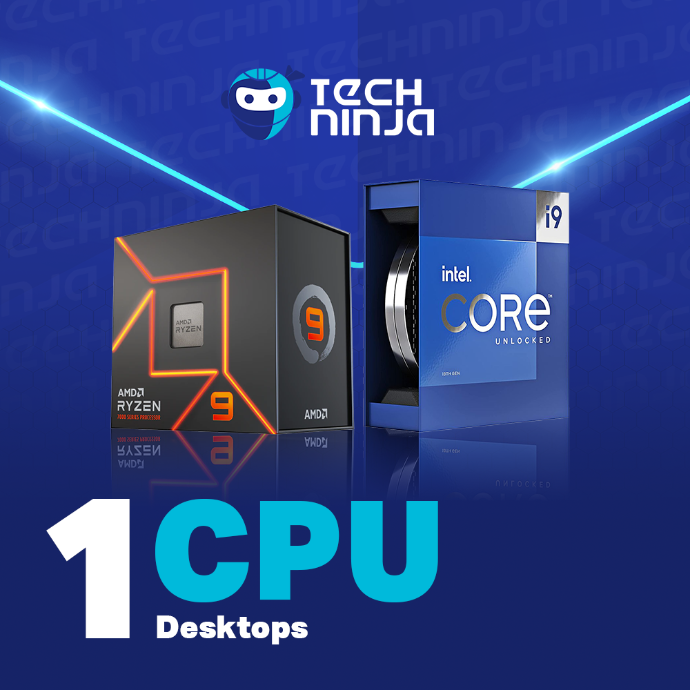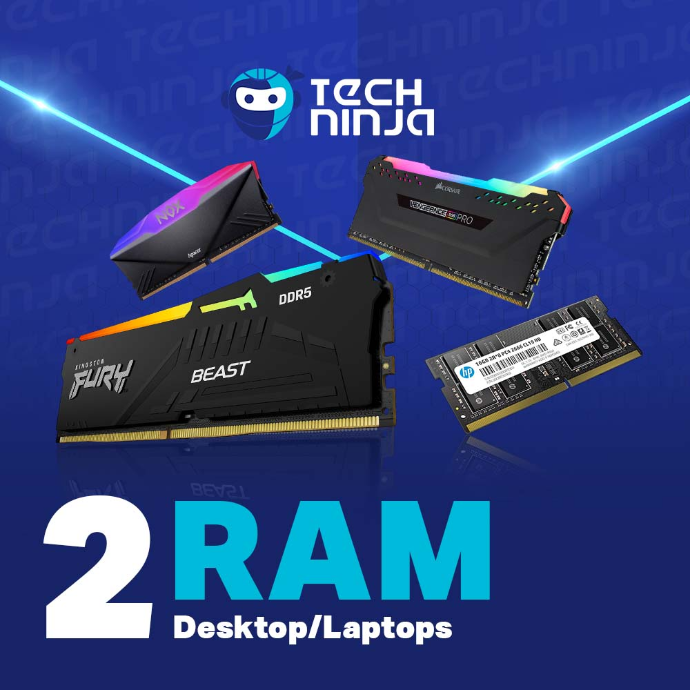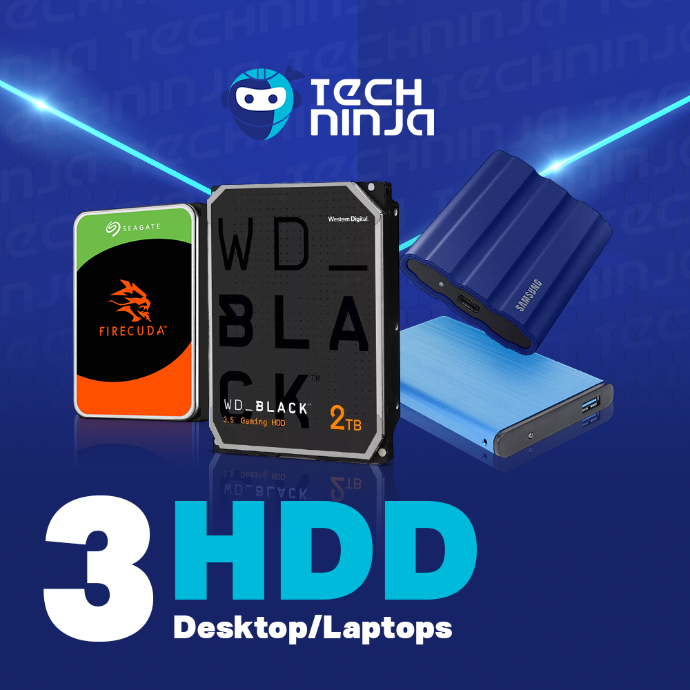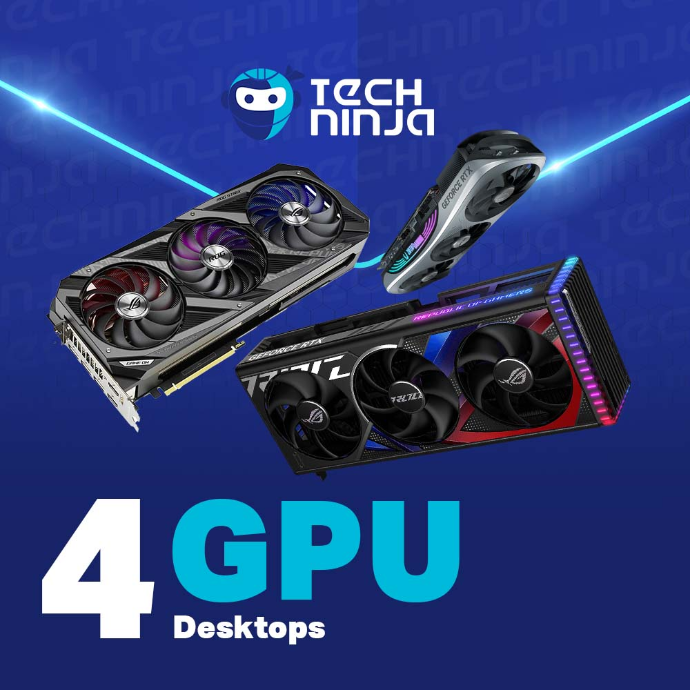If you notice that your computer is acting up or that performance is slowing, it may be time to upgrade one or more components on your PC. When it comes to making upgrades, these are the four components that, when upgraded, tend to solve the most common problems plaguing your computer. Find out what these components do, how long they should last, and signs that it's time to upgrade. Upgrade your tech life with Tech Ninja.

Central Processing Unit

Random Access Memory

Hard Disk Drive

Graphics Processing Unit
What is CPU?
The central processing unit (CPU) is the brain of the computer. It receives information (fetches), processes data (decodes), and performs calculations (executes).
CPU Functions:
-
Fetch
-
Decode
-
Execute
How long does a CPU last on average? 10-20 years
Signs you should upgrade.
-
Check your CPU usage record; if your CPU is maxing out on all cores, you may want to upgrade.
-
Note: If you upgrade your CPU, you may also need to upgrade your motherboard and RAM along with it.
What is RAM?
Random-access memory (RAM) temporarily stores the data that you're actively using while on your computer. RAM allows you to more quickly access data than if it were coming straight from your hard drive.
How long does RAM last on average? Typically, you will not need to replace your RAM completely. Rather, you may find that you need to upgrade it depending on what you use your computer for and what types of applications you run.
-
General internet browsing and/or running non-memory-intensive applications (4GB).
-
Gaming, video streaming, and/or running memory-intensive applications (8GB to 12GB).
-
Running applications related to high-resolution photo/video editing, animations, and illustrations (16GB to 64 GB).
Signs you should upgrade.
-
If you are experiencing performance issues like lagging or freezing with everyday tasks, you may need to upgrade your RAM.
-
Note: In some laptop models, the RAM is soldered to the motherboard, meaning that you can't upgrade the RAM yourself. Check your computer's service or hardware manual to determine if your RAM is upgradeable.
What is Hard Drive?
A hard drive is where all of the data on your computer is stored.
Common types of hard drives:
-
Hard Disk Drive (HDD)
-
Traditional spinning hard drives
-
cheaper than SSD, but slower as well.
-
can be louder and heat up faster than a solid-state drive.
-
-
Solid State Drive (SDD)
-
Newer technology.
-
does not have any moving parts.
-
smaller than hard disk drives.
-
How long does a hard drive last on average: 3-5 years
Signs you should upgrade.
-
Signs can range from slow performance to corrupted data; these issues may suggest your hard drive is close to failing.
-
Note: It's important to back up your hard drive as soon as you notice signs that it is close to failure. Common backup solutions include external hard drives and remote cloud storage.
What is GPU?
A graphics processing unit (GPU), or graphics card, receives information from the CPU and then decides how the pixels on the screen should display that information.
How long does a graphics card last on average: 5+ years
Signs you should upgrade.
-
When random lines or dots appear, or incorrect colors appear on your screen (known as artifacting), it might be time to upgrade your graphics card.
-
Note: Artifacting can also be a sign that your graphics card is overheating, so check the cooling system before you go straight to upgrading. Prevent overheating by regularly cleaning vents and fans to remove dust buildup.
Slow Performance? Then it is time for an upgrade! Bring your computer to us because we offer FREE computer diagnostic services and will let you know what component needs an upgrade. We offer different brands and specs for upgrades at competitive pricing. Upgrade your tech life with Tech Ninja!



